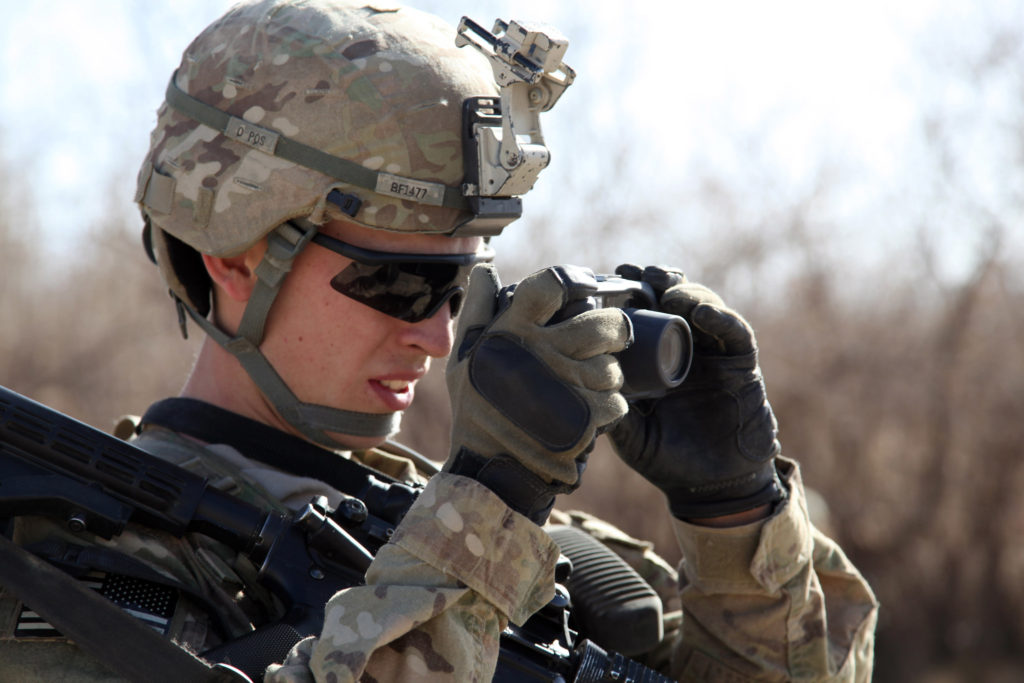

Topic Objective
Design and build a biometric recognition camera system to be integrated with the pre-existing Automated Installation Entry (AIE) system for deployment at Army installation Access Control Points (ACPs). The camera system can see through the windshield of approaching vehicles in various weather conditions during the day and nighttime and will also be used to report security alerts.
Description
A growing demand for biometric recognition software is driving development of the technology as agencies like TSA employ this capability to automate the identity and boarding pass verification process at their airport checkpoints. The National Institute of Standards and Technology (NIST) studied the biometric recognition performance of 189 algorithms from 99 different manufacturers and reported varying degrees of performance. Advances in high resolution image cameras and identity analytics software are closing the performance gap with respect to errors encountered in the visual spectrum and illumination changes.
The current effort would use existing technology to develop a facial recognition system that has the capacity to detect passengers in a moving vehicle and compare the captured image of the driver to a photo gallery of pre-approved users. The results would be displayed to the guard with a photo of the driver indicating an access granted or access denied response in time to allow uninterrupted vehicle traffic flow for approved users. The system would be used 24/7, day and night, and in a variety of weather conditions.
Phase I
Develop an overall system design that includes specifications of the high-resolution cameras and recognition technology. System metrics include:
Phase II
Develop and demonstrate a prototype system in a realistic environment. Conduct testing of an autonomous system to prove feasibility over extended operating conditions. The Government will provide access to a designated vehicle lane for setup, testing, and demonstration. Power source of 110V will be made available at the vehicle lanes. System metrics include:
Phase III
This system could be used in a broad range of military and civilian security applications where automatic entry are necessary – for example, in installation protection operations or in enhancing security in industrial facilities.
Submission Information
To submit full proposal packages, and for more information, visit the DSIP Portal.

References:
Topic Objective
Design and build a biometric recognition camera system to be integrated with the pre-existing Automated Installation Entry (AIE) system for deployment at Army installation Access Control Points (ACPs). The camera system can see through the windshield of approaching vehicles in various weather conditions during the day and nighttime and will also be used to report security alerts.
Description
A growing demand for biometric recognition software is driving development of the technology as agencies like TSA employ this capability to automate the identity and boarding pass verification process at their airport checkpoints. The National Institute of Standards and Technology (NIST) studied the biometric recognition performance of 189 algorithms from 99 different manufacturers and reported varying degrees of performance. Advances in high resolution image cameras and identity analytics software are closing the performance gap with respect to errors encountered in the visual spectrum and illumination changes.
The current effort would use existing technology to develop a facial recognition system that has the capacity to detect passengers in a moving vehicle and compare the captured image of the driver to a photo gallery of pre-approved users. The results would be displayed to the guard with a photo of the driver indicating an access granted or access denied response in time to allow uninterrupted vehicle traffic flow for approved users. The system would be used 24/7, day and night, and in a variety of weather conditions.
Phase I
Develop an overall system design that includes specifications of the high-resolution cameras and recognition technology. System metrics include:
Phase II
Develop and demonstrate a prototype system in a realistic environment. Conduct testing of an autonomous system to prove feasibility over extended operating conditions. The Government will provide access to a designated vehicle lane for setup, testing, and demonstration. Power source of 110V will be made available at the vehicle lanes. System metrics include:
Phase III
This system could be used in a broad range of military and civilian security applications where automatic entry are necessary – for example, in installation protection operations or in enhancing security in industrial facilities.
Submission Information
To submit full proposal packages, and for more information, visit the DSIP Portal.
References:
